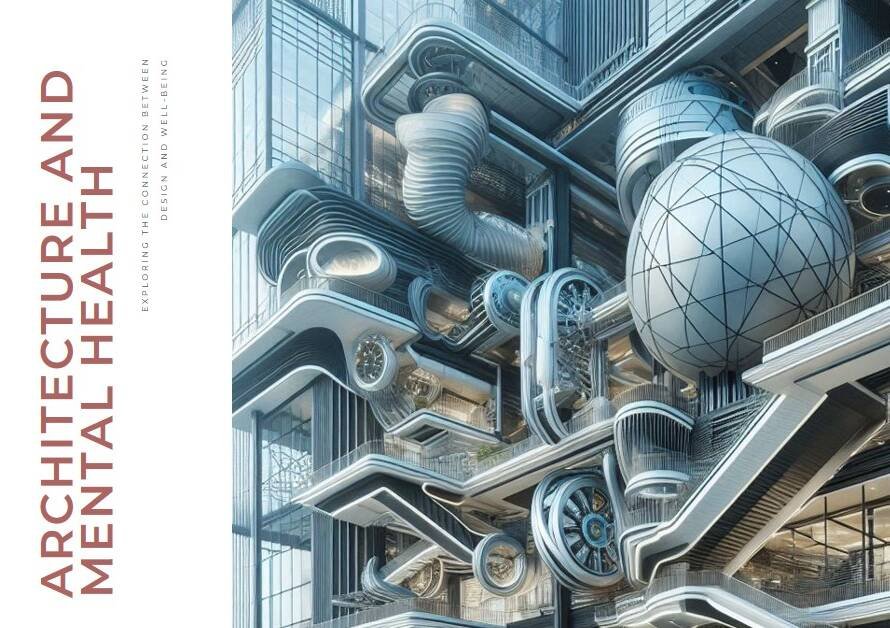
Table of Contents
Architectural Rendering Services – In the dynamic world of architecture and design, technological advancements have revolutionized the way rendering services are approached and delivered. From enhanced visual realism to streamlined workflows and innovative presentation methods, technology has reshaped the landscape of architectural rendering, empowering designers, architects, and clients alike. In this comprehensive exploration, we’ll delve into the transformative impact of technology on architectural rendering services and how it continues to drive innovation and excellence in the industry.
1. The Rise of Real-Time Rendering (Architectural Rendering Services)
Real-time rendering technologies have emerged as game-changers in architectural visualization, allowing designers to see immediate visual feedback as they make changes to their designs. Unlike traditional rendering methods that require lengthy processing times, real-time rendering provides instant updates, interactive experiences, and seamless design iterations. This technology not only accelerates design workflows but also fosters creativity and exploration by enabling designers to experiment with lighting, materials, and spatial arrangements in real time.
2. Advancements in Photorealistic Rendering
The pursuit of photorealism in architectural rendering has reached new heights with advancements in rendering software, hardware capabilities, and rendering algorithms. High-fidelity textures, lifelike lighting simulations, accurate material representations, and realistic environmental effects contribute to immersive visual experiences that closely resemble real-world scenarios. Photorealistic rendering not only aids in design visualization but also serves as a powerful communication tool for conveying design intent, capturing client imagination, and garnering project approvals.
3. Cloud-Based Rendering Solutions
Cloud computing has revolutionized the rendering landscape by offering scalable, on-demand rendering resources accessible from anywhere with internet connectivity. Cloud-based rendering solutions eliminate the need for expensive hardware investments, optimize rendering times through parallel processing, and enable collaborative rendering workflows among distributed teams. Design firms can leverage the flexibility, scalability, and cost-effectiveness of cloud rendering to handle large-scale projects, meet tight deadlines, and deliver high-quality render outputs consistently.
4. Integration with Virtual and Augmented Reality
The integration of rendering services with virtual reality (VR) and augmented reality (AR) technologies has unlocked new dimensions of immersive experiences and client engagement in architectural presentations. VR walkthroughs allow clients to explore virtual environments, experience spatial relationships firsthand, and provide feedback on design elements in real time. AR applications overlay virtual designs onto physical spaces, enabling clients to visualize proposed changes within existing contexts, enhancing decision-making and design validation processes.
5. AI-Driven Rendering Enhancements
Artificial intelligence (AI) algorithms have made significant strides in optimizing rendering workflows, automating repetitive tasks, and enhancing rendering quality through intelligent denoising, upscaling, and content generation techniques. AI-driven rendering engines analyze scene complexities, optimize rendering settings, and reduce rendering times while maintaining visual fidelity and accuracy. These advancements streamline production pipelines, improve efficiency, and empower designers to focus on creative aspects of rendering projects.
6. Sustainable Rendering Practices
Technology has played a crucial role in promoting sustainability in architectural rendering services through energy-efficient rendering algorithms, virtual prototyping for sustainable design evaluations, and lifecycle analysis simulations. Designers can simulate daylighting strategies, energy performance metrics, material sustainability assessments, and environmental impacts early in the design phase using rendering tools. This proactive approach to sustainability aligns with green building initiatives, regulatory requirements, and client expectations for environmentally conscious design solutions.
7. Collaboration Platforms and Remote Work
Cloud-based collaboration platforms and remote rendering solutions have facilitated seamless teamwork, communication, and project coordination among geographically dispersed teams in the architecture and design industry. Design iterations, feedback exchanges, version control, and real-time updates are streamlined through collaborative platforms, ensuring project continuity and alignment across stakeholders. Remote rendering capabilities enable designers to access rendering resources remotely, maximizing productivity and workflow flexibility.
8. Mobile Rendering and Presentation Tools
Mobile devices have become powerful tools for accessing rendering services, showcasing designs, and collaborating on-the-go. Mobile rendering apps, augmented reality viewers, and interactive presentation tools empower designers and clients to review designs, make annotations, and visualize projects in immersive formats directly from their smartphones or tablets. This accessibility fosters client engagement, facilitates design reviews, and accelerates decision-making processes during project development stages.
9. Customization and Personalization Options
Technological advancements in rendering services offer extensive customization and personalization options to cater to diverse client preferences, project requirements, and design aesthetics. From custom lighting setups, material libraries, and scene configurations to bespoke rendering styles and post-production effects, designers can tailor render outputs to align with client branding, marketing strategies, and design narratives effectively. This customization flexibility enhances design storytelling, brand differentiation, and client satisfaction in architectural rendering projects.
10. Continuous Innovation and Future Trends


The pace of technological innovation in architectural rendering services continues to accelerate, paving the way for future trends such as real-time ray tracing, AI-driven design optimizations, collaborative virtual environments, cloud-based VR/AR experiences, and interactive client feedback tools. Embracing these trends, staying updated with software advancements, and fostering a culture of innovation within design teams position professionals to navigate evolving client expectations, market demands, and design challenges with agility and creativity.
In conclusion, technology has not only transformed architectural rendering services but has also redefined the possibilities and standards of design visualization in the architecture and construction industry. Embracing technological innovations, harnessing the power of real-time rendering, cloud computing, AI-driven optimizations, and immersive experiences empowers design professionals to create compelling, sustainable, and visionary architectural projects that inspire, engage, and endure in a rapidly evolving digital landscape.



